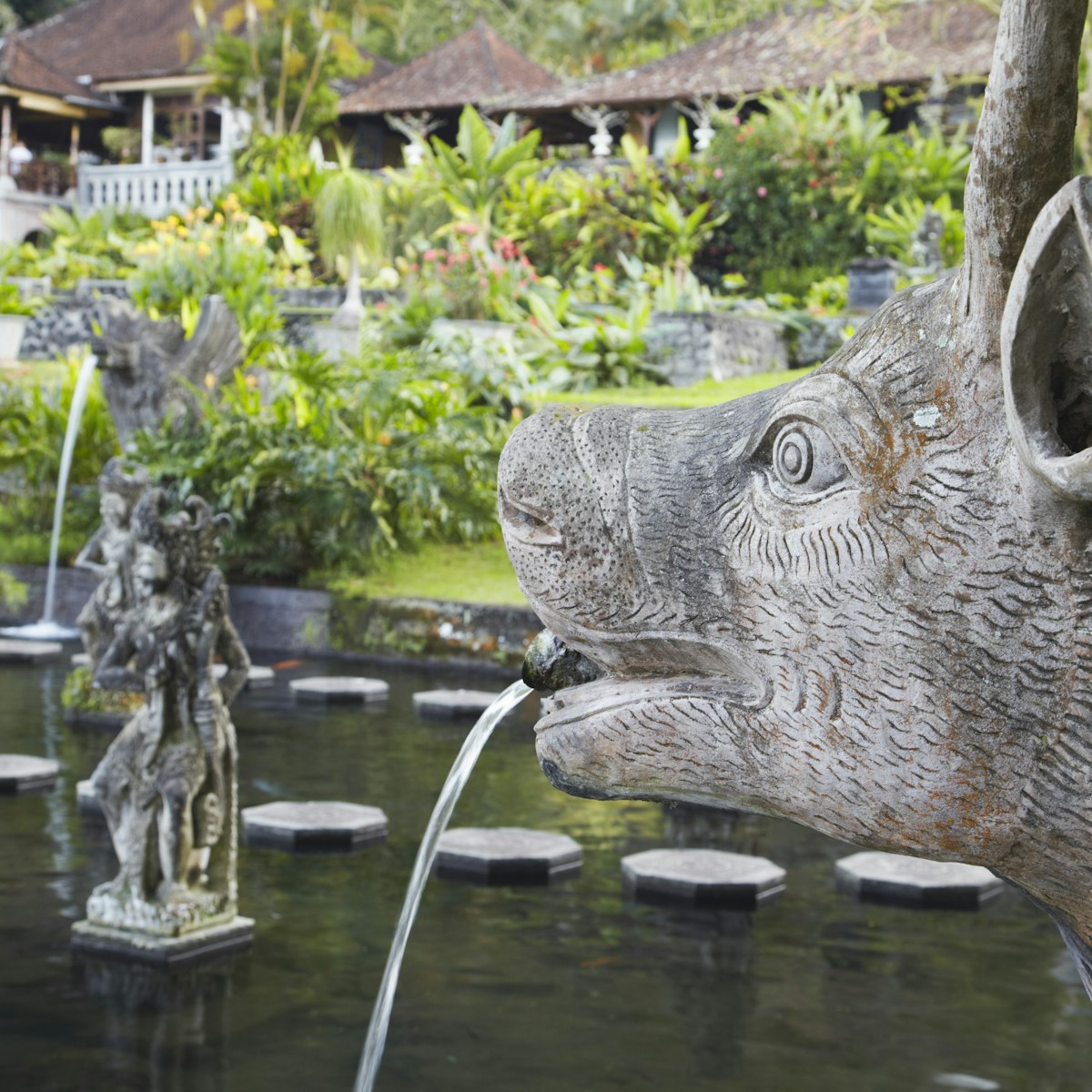If you only visit one museum in Ubud, make it this one. Founder Agung Rai built his fortune selling Balinese artwork to foreigners in the 1970s, and during his time as a dealer he also built one of Indonesia's most impressive private collections of art. This cultural compound opened in 1996 and displays his collection in two purpose-built gallery buildings – highlights include the wonderful 19th-century Portrait of a Javanese Nobleman and his Wife by Javanese artist Raden Saleh (1807–80).
Exhibits include classical Kamasan paintings and Batuan-style work from the 1930s and '40s and among the artists represented are I Gusti Nyoman Lempad (1862–1978), Ida Bagus Made (1915–1999), Anak Agung Gede Sobrat (1912–1992) and I Gusti Made Deblog (1906–1986). Stand-out works to seek out in the modern art gallery are Green Rice Paddies (1987) by Nasjah Djamin (1924–1999) and Wild Orchids (1988) by Widaya (1923–2002). In the traditional art gallery, look for The Dance Drama Arja (1945) by I Ketut Kasta (b 1945), Cremation Cememony (1994) by I Ketut Sepi (b 1941) and the extraordinarily detailed Wali 'Ekadesa Rudra' (2015) by I Wayan Mardiana (b 1970). The traditional art gallery is also home to a collection of works by expat artist Walter Spies (1895–1942), who played a significant role in the development of the Ubud painting school.
It’s fun to visit ARMA when local children practise Balinese dancing and during gamelan practice. There are also regular dance performances and myriad cultural courses offered here.
Enter the museum grounds from Kafe Arma on Jl Raya Pengosekan or around the corner at the ARMA Resort entrance. Your ticket includes a drink at the cafe.








